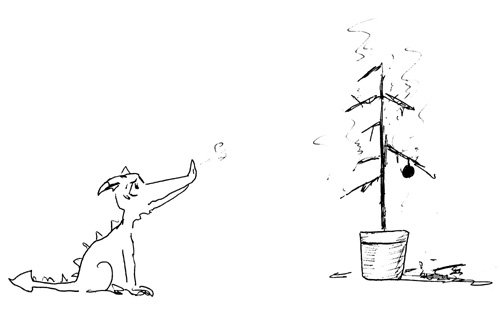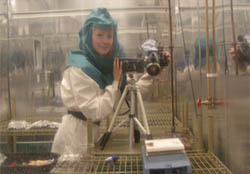I started by seeing smoke coming off the bonnet. We opened the window and it smelt like smoke. We got out and through the side slit I could see flaming inside the bonnet (I think it started behind the left head light). Luckily we had lots of water in the boot. We started dowsing the bonnet in water but the handle for opening the bonnet was broken so I couldn't get it open.
After two 5 litre bottles of water and no apparent change to the fire, I stood back to call the fire brigade while Dr. Cowlard braved the fire and continued emptying bottle after bottle of water over the hood...nevertheless, he soon spotted flames 'licking' out of the left tyre cap and told me to "get away from the car, now!". Since we were far down a winding dirt track we had to run down and station ourselves at two main turn-offs along the route from the main road to show the fire trucks where to go...I stayed at the closer turn-off and soon saw Dr. Cowlard whiz past, hanging out of a fire truck window. Apparently, by the time the fire crew got to the car, the flames were ~1.5m high off the bonnet. Luckily the fire was extinguished within minutes and hadn't spread past the bonnet and left tyre, but they had to open the hood with a crow bar!
I've attached photos of the 'aftermath'. The poor car is a right-off...luckily the fire brigade arrived when they did as the fields around there are all dry undergrowth!!! We thought we might have to resign from our 'profession', had we started a bush fire!
Anyway - I copied you in on this as before I get rid of the car I was wondering if any more specific photos of it would be useful for anything? Perhaps for the 'fire investigation' course?
Cecilia Abecassis Empis
PhD Student
BRE Centre for Fire Safety Engineering







